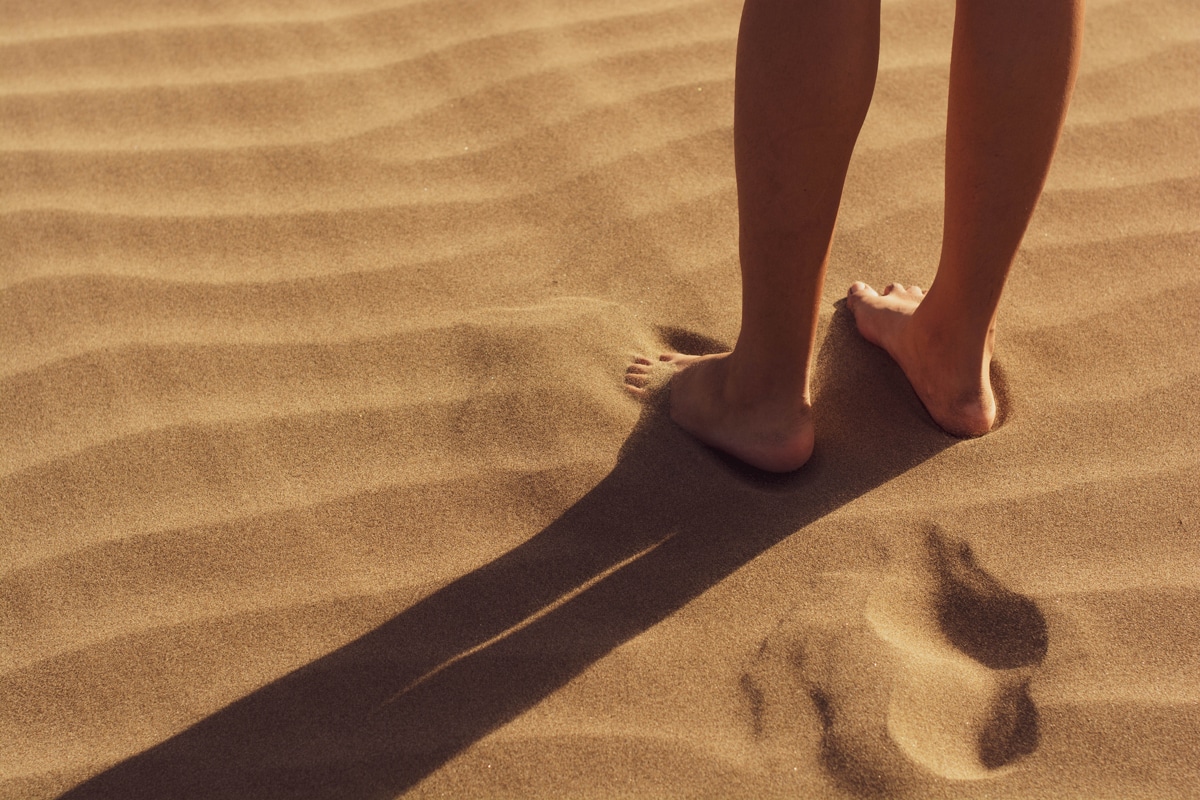
For most people, leaving their homes without footwear would be unthinkable! And, in most cases, social etiquette and comfort make it a logical choice to just wear shoes. However, if you do get the chance to take a few steps each day barefoot on a surface you should take it!
Walking barefoot can offer endless benefits for our mental well-being and physical health, and can restore our natural walking pattern.
Unsure how to get started? The guide below can take you through the advantages of going barefoot and a few tips to help you get started.
Reduces the Discomfort From Ill-Fitting Shoes
According to statistics by the American Podiatric Medical Association, nearly 80% of Americans have experienced foot and heel conditions caused by wearing ill-fitting shoes. What’s more, inadequate and low-quality footwear can lead to posture issues and throw the mechanics of the ankle, knees, and spine off balance.
Going barefoot for a few minutes each day can help safeguard your foot’s health and relieve the discomfort deriving from ingrown nails, heel pain, pinched nerves, and deformities such as bunions and hammertoes.
Restores Your Natural Walking Pattern
A person’s walking pattern says a lot about their well-being. So, it isn’t surprising that medical professionals often use a person’s gait as an indicator of their health and as a predictor of transition into cognitive impairment.
Walking barefoot can help you improve your overall health by restoring your natural walking pattern and speed. In turn, this can improve foot mechanics and mobility, thus reducing the risk of further injury and pain.
Practicing Sports? Footwear That Gives the Feel of Bare Feet Can Help
If you practice sports, you might not always have the chance to go barefoot. For example, if you tend to jog often, going barefoot on paved roads can be both uncomfortable and dangerous.
However, in this case, you should find the perfect barefoot running shoes for your needs. Wearing footwear that imitates the feeling of going barefoot can help you improve your performance, avoid injuries, and strengthen your foot muscles, toes, and arch.
Eases Chronic Pain and Inflammation
Going barefoot or using barefoot-like shoes has been seen to help with lowering inflammation levels. Indeed, studies published in the Journal of Inflammation Research show that walking barefoot on grass can support the transferring of mobile electrons, which act as antioxidants, thus reducing oxidative stress and inflammation.
What’s more, putting your skin in contact with grass, stones, and dirt can improve the blood flow in the feet, and exposure to sun rays can provide the vitamin D necessary to support the immune system.
Improves Balance, Mobility, and Proprioception
Whether you are practicing a team sport or mindfulness activities such as yoga or pilates, incorporating fitness into your daily life is critical to support healthy aging. However, gaining balance, mobility, and proprioception (the sense of self-movement) is an ongoing effort that can take years of practice. Making a small exercise area with artificial turf might be a good idea as it’s easy to keep it clean.
Switching to walking barefoot at least for part of the day can help you improve mobility, reduce the risk of injuries related to falls and boost balance – especially as you age!
Keeps Your Cardiovascular Health in Check
Walking barefoot might help improve blood circulation and lower blood pressure, thus boosting cardiovascular and circulatory health.
Additionally, studies conducted in 2013 show that practices such as grounding can increase the surface charge of red blood cells. This, in turn, can reduce blood viscosity and clumping, which can minimize the risk of cardiovascular conditions and the need for medical interventions.
Promotes Grounding and Stress-Relieving Mindfulness Activities
Grounding – or activities that allow you to electrically reconnect with the Earth’s surface – has been seen to offer several benefits. Beyond the positive impact that earthing can have on physical health, practicing grounding and walking barefoot can also relieve stress and reduce anxiety.
What You Need To Know To Practice Barefoot Safely
Although barefoot walking can be incredibly beneficial, don’t forget that it might take some time for your body and feet to adapt to this new practice. That is why you should take some key precautions to prevent injuries and discomfort.
Some of the best practices to keep in mind include walking barefoot for just a few minutes a day, choosing high-quality barefoot footwear, and choosing soft surfaces to start with. And, don’t forget to take a break when you need to!





